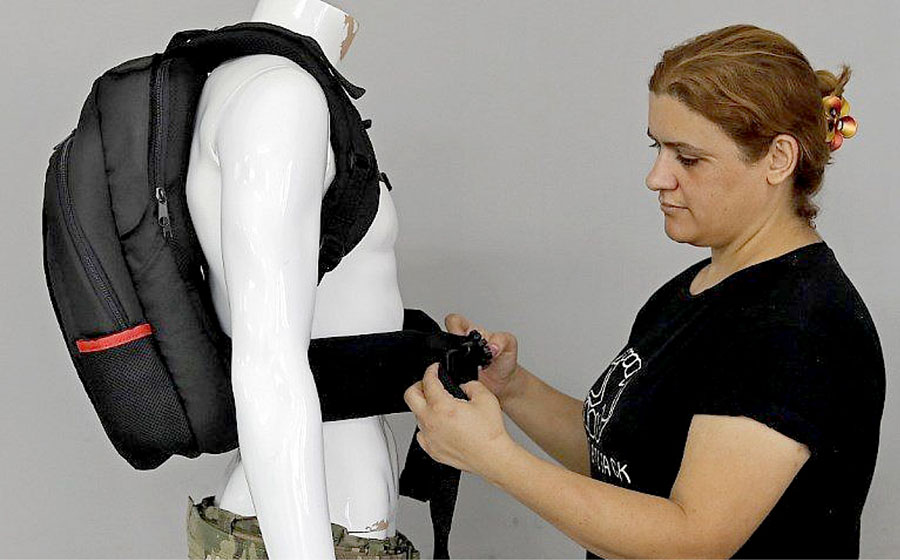Most retailers have fully embraced the short season of offering home merchandise to kids heading back to college. However, it’s an educational process.
If you think the back-to-school shopping season is just about pencils and notebooks, you clearly need a refresher course in the business. Over the past few decades, back-to-campus – sometimes called back-to-college — has become an important subset component of the larger back-to-school season as college-bound students increasingly look to personalize their dorm room environment. So, while traditional school supplies remain at the heart of the season – which starts in mid-July in many parts of the country and runs through to the end of September – they have been supplemented by all the accouterments of a home-away-from-home: bed linens, towels, shower and bath accessories, desk or task lamps and more than a few probably-not-permitted small electrics like coffee makers, microwaves and the occasional toaster oven.
As such this represents an important season for retailers in the home business who see this concentrated shopping period as a way to move merchandise in a less-price-sensitive atmosphere where nothing is too good for someone going off to school…especially when parents are paying for it. The downside of this seasonal business for retailers, as it is for any category with a condensed selling season that ends abruptly (even if everyone knows when that is), is inventory management. While some products like kitchen electrics and towels can go back into running inventories, other odder items like twin-extra-long sheets and shower caddies aren’t likely to be regular sellers throughout the year.
While each major national retailer that plays in the back-to-campus space puts its own spin on merchandising, this season we saw some trends and some better-than-average efforts.
2018 Best in Class
- More retailers are leading off their online presentations with an inspirational look book type of landing page where students (and their paying parents) can set a design course. Target, for instance, offers six different lifestyles, ranging from Bohemian + Rustic to Industrial + Vintage to Romantic + Dreamy. A nice touch on its site is 360-degree virtual reality feature that allows viewers to tour a themed dorm room.
- Many other retailers have similar design presentations and it is the icing on the cake, even if very little of this gets translated into physical store spaces.
- A checklist that serves as the foundation for the shopping expedition is increasingly becoming a standard feature in retailer’s merchandising efforts. Bed Bath & Beyond was one of the first to initiate this practice, in its stores before online took it up, even personalizing it to local schools.
- The de facto bedding product is the twin XL sheet, standard issue in dorm rooms it seems. As most regular twin sheets are designed for young teens or shrinking seniors, the XL sizing accommodates college-age bodies. This is not a size that is offered in virtually any other bedroom set-up.
- Many stores are trying to go one step beyond in their services for college-bound kids, offering a buy-at-one-store/pick-up-at-another option, decorating tips for clueless students and personal shopper access. BBB does an especially good job on this front as do Macy’s and Walmart.
Getting with the Program
- Consumer electronics are, of course, front and center in most retailers’ assortments, including laptops, prepaid cell phones and all the cabling and charging paraphernalia that seems to have taken on a life on its own. Walmart especially puts a push on these products.
- Like many retailers, IKEA offers shoppers two paths in their pursuits: by classification or by style, but they place this junction at the top of their webpage seemingly cutting out dead ends and shopping misdirections. IKEA also ran a Back to College sale event in early July, a promotion one doesn’t often see this retailer offering.
- Macy’s, which was relatively late to jump on the back-to-college bus, has fully embraced it now. This season it took a more whimsical approach to the season, dividing its merchandising offerings into categories like “Dream Big,” “Adulting 101” and “Desk Jockey. “The store does a shout-out to its merchants, proclaiming at the top of its campus landing page: “After a major brainstorming sesh with our Home Fashion Director Roberson Keffer, we’ve got some BIG ideas for your dorm room. Consider college in session!”
- Kmart also takes a more fun approach to the season, presenting a series of lively design themes, from Star Gazer to Wild Tropical. As much as its parent company continues to starve it of merchandising resources, Kmart still is often surprisingly innovative in its marketing efforts across online, TV and print.
Not So Much with the Program
- Not everyone is fully engaged with this season. While Kohl’s offers a full array of dorm room-related merchandise it does not feature any themed pages or product assortments, going right into a laundry list of individual items. Penney too, while offering a checklist, does not do themed presentations or offer shopping by look functionality, only dividing its products into “boy” and “girl” styles, an odd differentiation given today’s political correctness focus.
- Sears too takes a more pedestrian approach to back-to-campus telling shoppers” It’s Time to Gear Up” but then relying on a classification presentations and a call-out to its membership points program.
- Perhaps not surprisingly Amazon is also in the laundry list category, with a long roster of individual items for sale under the back-to-campus heading but no themed presentations or extra bells and whistles.
- But what may be surprising is that Wayfair really isn’t any better. While this online seller usually does a better job with ensemble selling and room presentations, it too offers merchandise items rather than themes. Its fabled 3D and augmented reality features are nowhere to be found if you’re shopping for a dorm room.
- And if you’re looking for potentially the most surprising – not to mention disturbing – product for the season, how about a bulletproof backpack? No kidding. An Israeli company, Masada Armour, has introduced a military-grade backpack that it says can withstand the force of a bullet from a high-velocity weapon like an AK-47 or an M-16. It’s not cheap — $700 – and it’s not exactly lightweight – 6.5 pounds – but the company says it is receiving orders from many places, including the U.S. An even stronger pack, with ballistic hard plates, is in development.
Back-to-School as Bellwether Myth
Remember when pencil cases were a school favorite? Whatever the products, the season starts to wind down now in early September – most colleges are back in session by Labor Day week and the diminishing number of purchases being made through this month largely reflect students filling in purchases after seeing what everybody else bought.
But one thing about the back-to-campus season remains a retailing myth that just won’t go away: that it is a harbinger of how business will be for the fourth quarter holiday season. In fact, there is virtually no connection between what happens in August and what occurs in December. They are two wildly different purchasing triggers for two very different demographics and there are way too many variables between now and then, including November congressional elections, ongoing tariff dramas and unknown disasters – both natural and manmade.
Back-to-campus is a season onto itself and smart retailers have figured out how to capitalize on it. The ones who haven’t are destined to be left back.
Warren Shoulberg went to college but all he got was a t-shirt.




